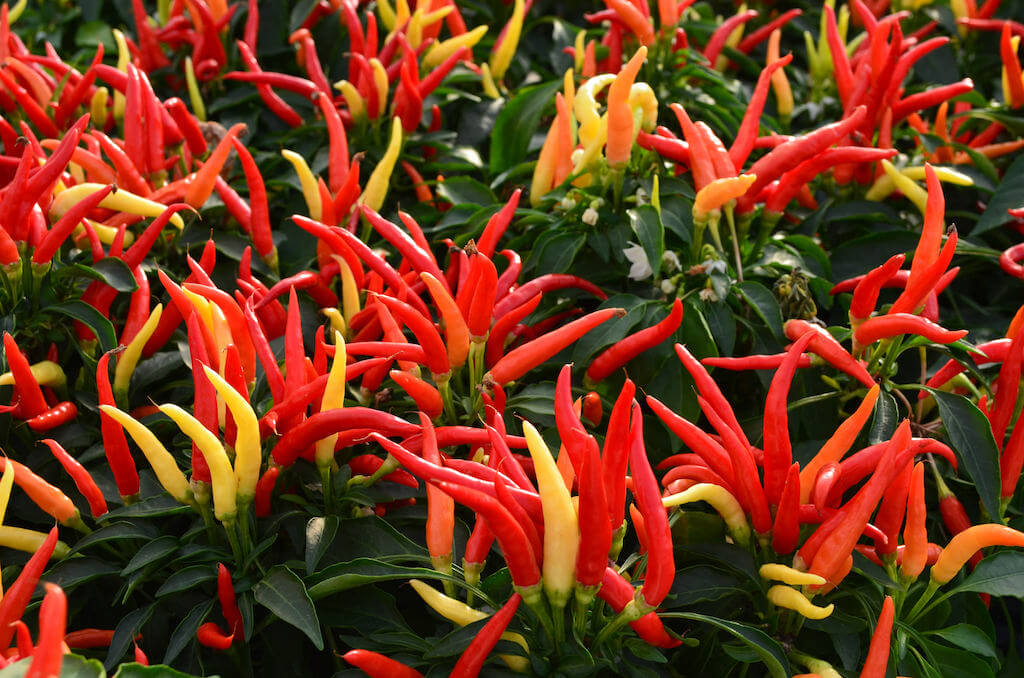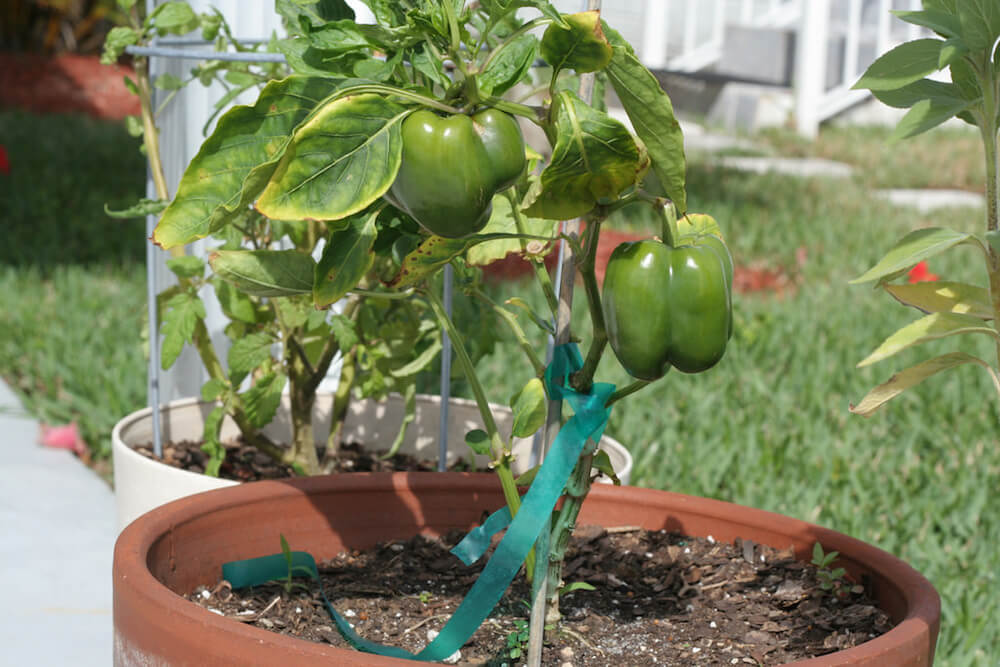Companion Planting For Peppers • Insteading

Do you are eager on light, crisp peppers in a broad spectrum of colors? Or scorching pink chili peppers that make your fashion buds tingle and your eyes water? Develop peppers in your yard and likewise you’ll have an assortment in order so as to add daring style to soups, stews, stir-fries, sandwiches, salads, and salsa.


Individuals who say they don’t like peppers often change their minds as quickly as they fashion a garden-grown, fully-ripened pepper.
Peppers Are Easy To Develop
Peppers are a cultivar group of the plant species Potatoesa member of the nightshade family, Solanaceae. They’re botanically related to potatoes, tomatoes, and eggplant.
Using companion planting methods, peppers are easy to cultivate throughout the dwelling yard. Be taught on to search out how companion planting, or grouping complimentary vegetation collectively, can maximize yard home, enhance style, repel insect pests, enhance progress fees, and improve yields of meals crops throughout the homestead yard.
Peppers, tender perennials generally grown as annuals, require an prolonged, scorching rising season. Native to Mexico, the West Indies, and Central and South America, peppers do most interesting in a full photo voltaic location and like nutrient rich, well-drained soil. Enhance soil earlier to planting with a generous amount of aged herbivore manure (sheep, goat, horse, cow, lama).
Companion Vegetation For Peppers
Inside the dwelling yard, companion planting serves a numerous array of capabilities ranging from attracting helpful pollinators and bugs, providing a wind barrier or shade for neighboring vegetation, crowding out weeds, along with drawing insect pests away from totally different meals crops. Companion planting might be top-of-the-line strategies to stay away from using noxious chemical merchandise to fend off bugs or fertilize yard vegetation.
Listed below are some flowers, greens and herbs which will reward your pepper patch.
- Radishes: Easy to develop from seed in as little as 3-4 weeks, radishes planted spherical peppers enhance style, maximize yard home, and provide engaging ground cowl to choke out weeds.
- Peas And Beans : Every of these greens restore nitrogen throughout the soil, cowl bare ground to handle weeds, and enhance the flavour of peppers.
- Chives, Onions And Leeks: Cultivating onions, chives or leeks throughout the perimeter of your pepper patch enhances style and helps deter aphids and totally different yard insect pests. Chives are a perennial plant, so planting as quickly as will current flavorful chives yr after yr. Chives moreover attraction to bees and butterflies to the yard .
- Basil:Basil repels aphids, ants, mites, slugs, flies, certain beetles, and a variety of totally different yard pests.
- Marigolds, Nasturtiums, and Petunias: Together with together with a splash of smart color to the yard, marigolds, nasturtiums, and petunias help deter beetles, aphids, whiteflies, squash bugs, and totally different frequent yard pests.
- Lettuce, Spinach and Chard: Low-growing with shallow roots, these yard staples current an edible ground cowl that helps administration weeds.
- Tomatoes – Peppers and tomatoes are “good neighbors” as tomatoes help protect the soil free of harmful soil nematodes and push back beetles.
- Dill: Rising dill throughout the yard attracts pollinators and totally different helpful bugs whereas repelling spider mites and aphids.
- Parsley: Many flavorsome herbs make great companions for peppers. Parsley, extreme in dietary nutritional vitamins and rich in style, will probably be grown with peppers. Parsley attracts predatory wasps, which help administration aphids and tripe.
- Marjoram, Oregano And Rosemary: Cultivate these pungent and flavorful herbs near peppers to spice up style and to repel bugs.
- Geraniums: When planted adjoining to peppers, geraniums add color to the yard plot and repel Japanese beetles.
Vegetation To Avoid Planting Near Pepper Vegetation
Plenty of frequent yard vegetation should not be planted in shut proximity to pepper vegetation, as they might damage one another. Mustard vegetation and Brussels sprouts should not be grown close to peppers. Moreover, members of the plant family Brassica, which includes cabbage and broccoli, should not be grown within the an identical area as pepper vegetation. Fennel, soybeans and lima beans are moreover poor companions for pepper vegetation.
Kinds Of Peppers
Sweet peppers and chili (scorching) peppers are the two elementary chili varieties. Chili peppers are generally utilized in small portions as a meals seasoning. Sweet peppers are used as a vegetable. Peppers vary drastically in type, measurement and heat diploma.
In response to the Washington State School Extension Service, “bell peppers are thought-about to be sweet with no necessary heat. Pepperoncini, banana pepper, and Anaheim pepper are comparatively mild-flavored peppers. Within the meantime cayenne, Hungarian wax, jalapeño, Serrano and chipotle peppers would possibly pack necessary heat. Habanero and pequin peppers will probably be insanely spicy scorching.”
Within the US, sweet bell peppers are probably the most well-liked. Bell-shaped with three to 4 lobes, sweet bell peppers are inexperienced, yellow, orange, pink, brown, or purple, counting on the variability and the extent of ripeness.
The overwhelming majority of bell peppers purchased throughout the market are picked on the mature inexperienced stage: completely developed, nevertheless not however ripe. When allowed to ripen on the vine, bell peppers start to flip pink—these peppers have further style and further nutritional vitamins.
Bell peppers are light and flavorful, with a crunchy texture. If you like a pepper that may very well be a bit spicier, attempt Mexi-Bells, a smaller sweet bell pepper with a barely further intense style.
Pepper Planting Concepts
- Set your pepper plant seedlings out in any case hazard of frost is earlier and the soil is warmed and days are sunny. Peppers develop successfully in containers, pots, raised beds and in-ground gardens.
- Plant peppers 24 inches apart to allow them room to develop. Home rows 12-to-24 inches apart.
- Water pepper transplants immediately and ensure to protect soil uniformly moist until vegetation are successfully established. Peppers require about two inches of water per week, and further when summer season days are scorching and arid. Do not let pepper vegetation dry out between watering.
- Cowl soil spherical each plant with mulch (grass clippings, straw, or chopped leaves) to keep up soil moist and funky.
- Embody pepper vegetation with stakes or current a tomato cage to help the plant and bear the load of the peppers as they mature.
Although peppers are self-pollinating, they might even cross-pollinate. Numerous sorts of peppers must be isolated from one another within the occasion you propose to save lots of numerous the seeds for planting subsequent season. They might cross-pollinate if intermixed.


If completely totally different sorts of pepper vegetation pollinate each other, the seeds and the following vegetation will exhibit traits from each mom or father plant. Which will have an effect on the appears to be like and style of the model new crop. Nonetheless, within the occasion you don’t plan to save lots of numerous seeds, you’ll plant numerous sorts of peppers adjoining to at least one one other.
Harvesting Pepper Vegetation
Harvest peppers with a knife or shears as they mature, then retailer throughout the fridge. Peppers saved throughout the fridge crisper preserve modern for as a lot as three weeks. Peppers can even be canned, pickled, dehydrated, or cored and chopped to retailer throughout the freezer.
The Georgia Division of Agriculture suggests a variety of different methods to utilize and luxuriate in modern peppers from the homestead yard:
- Stuff bell peppers with rice, meat or salad fillings for a delicious aspect dish.
- Brighten up tossed salads with bell pepper slices.
- Grill bell peppers with tomatoes, onions, hen, shrimp or beef for succulent shish kebabs.
- Combine sliced bell peppers, cauliflower and broccoli with a vegetable dip for a healthful afternoon snack.
- Stir fry bell peppers with hen, pork or beef.
- Add bell peppers to pasta salads.
- Chopped bell peppers add style and crunch to hen or tuna salads.
- Mix bell peppers in soups or stews for added style.
- Make a vibrant pasta primavera using a group of peppers and totally different greens.





